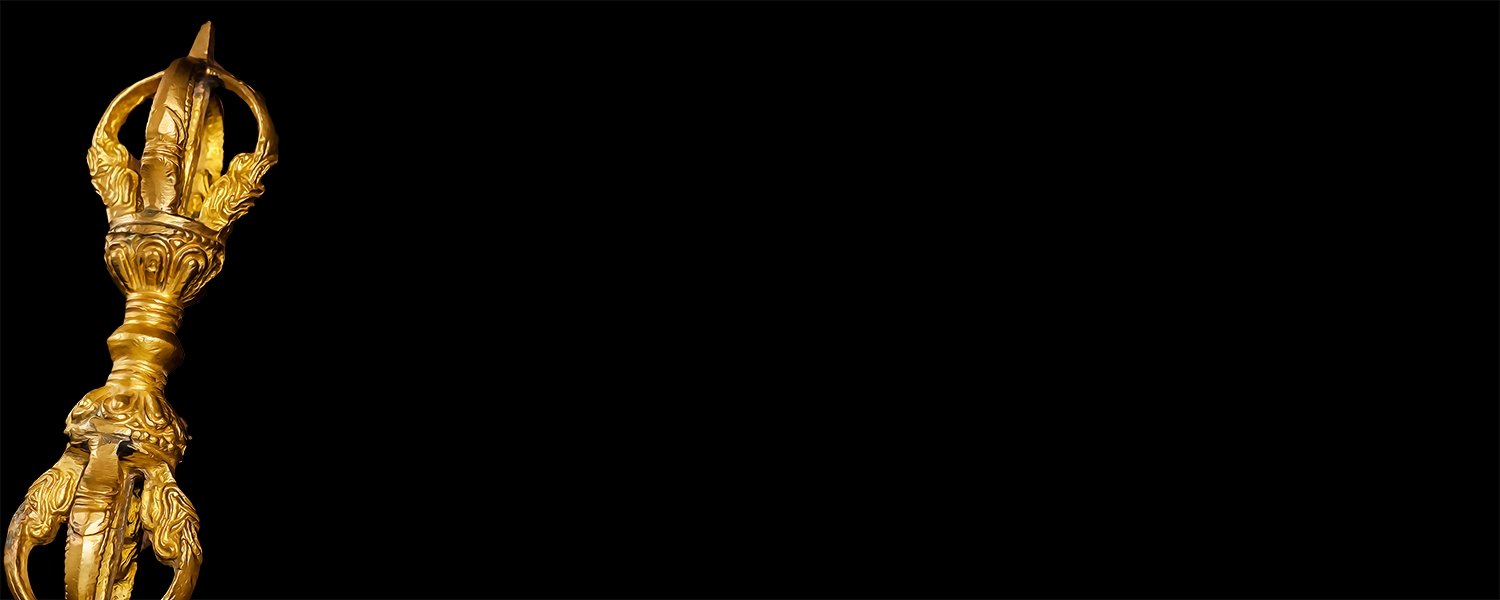Vajra, five-branched ritual object widely used in Tibetan Buddhist ceremonies.
Vajra, is the symbol of the Vajrayāna school of Buddhism
Vajra, in Sanskrit and rdo-rje in Tibetan, has two meanings "lightning" and "diamond".
Like love at first sight, the vajra splits through ignorance. The thunderbolt was originally the symbol of the Hindu rain god Indra (who became the Buddhist Śakra) and was employed by the 8th century tantric (esoteric) master Padmasambhava to conquer the non-Buddhist deities of Tibet.
Like the diamond, the vajra destroys but is itself indestructible and is therefore assimilated to śūnya (all-inclusive emptiness).
The vajra is made of brass or bronze, the four branches at each end curve around the central fifth to form a lotus bud shape. A nine-branched vajra is less commonly used.
Also read: The Buddhist symbols and their meanings
In ritualuse, the vajrais frequently used in conjunction with the bell (Sanskrit ghaṇṭā; Tibetan dril bu), the various gestures (mudrās), when correctly performed, having considerable metaphysical power.< /p>
The vajra (symbolizing the masculine principle, the aptitude for action) held in the right hand and the bell (symbolizing the feminine principle, intelligence) in the left hand, the interaction of the two ultimately leading to enlightenment.

An instrument symbolizing the vajra is widely used in tantra rituals. It consists of a spherical central section, with two symmetrical sets of five prongs, which extend from the lotus flowers< span> on either side of the sphere and come to a point two points equidistant from the center, giving it the appearance of a "diamond". scepter", is how the term is sometimes translated.
The vajra is made up of several parts. In the center is a sphere which represents Sunyata, the primordial nature of the universe, the underlying unity of all things. Emerging from the sphere are two eight-petaled lotus flowers. span>
One represents the phenomenal world (or in Buddhist terms Samsara ), l 'other represents the world noumenal ( Nirvana ). This is one of the dichotomies< span> fundamental elements that are perceived by the unenlightened.
Also arranged around the mouth of the lotus are two, four or eight creatures called makara.
They are mythological half-fish, half-crocodile creatures composed of two or more animals, often representing the union of opposites (or a harmonization of qualities that transcend our usual experience ). From the mouth of the makara come tongues which meet at a point.< /p>
The five-branched vajra (with four makara, plus a central branch) is the most commonly observed vajra. There is an elaborate system of correspondences betweenthe five elements of the noumenal side of the vajra and the phenomenal side.
An important correspondence is between the five "poisons" with the five wisdoms.
The five poisonss are the mental states that obscure the original purity of a being's mind, while the five wisdoms are the five most important aspects of the enlightened mind. Each of the five wisdoms is also associated with a Buddha figure.
In art, the vajra is an attribute of many deities, such as the celestial Buddha Akṣobhya and his manifestation as a bodhisattva ("Buddha to be"), Vajrapāṇi (In whose hand is the Vajra). The viśva-vajra is a double vajra in the shape of a cross with four equal arms.
VAJRA BRACELETS
vajra bracelets are beautiful pieces of jewelry. In addition to being a sublime bracelet, it has very interesting virtues.
Vajra bracelets bring self-confidence, and help to overcome all the obstacles of life in general. We often get it when we have tough times in life.
Other Sources: https://fr.wikipedia.org/wiki/Vajra< /a>












































4 comments
Diane Lamoureux
Ou pourrais je me procurer un bracelet varja
Et in varja
sanou mouhames
je veux etres le plus celebre de ma generation le plus puissants et richisimmes d’afrique et 3 dans le monde comment fais
sanou mouhames
je veux etres le plus celebre de ma generation le plus puissants et richisimmes d’afrique et 3 dans le monde comment fais
Alllskdjh
nul